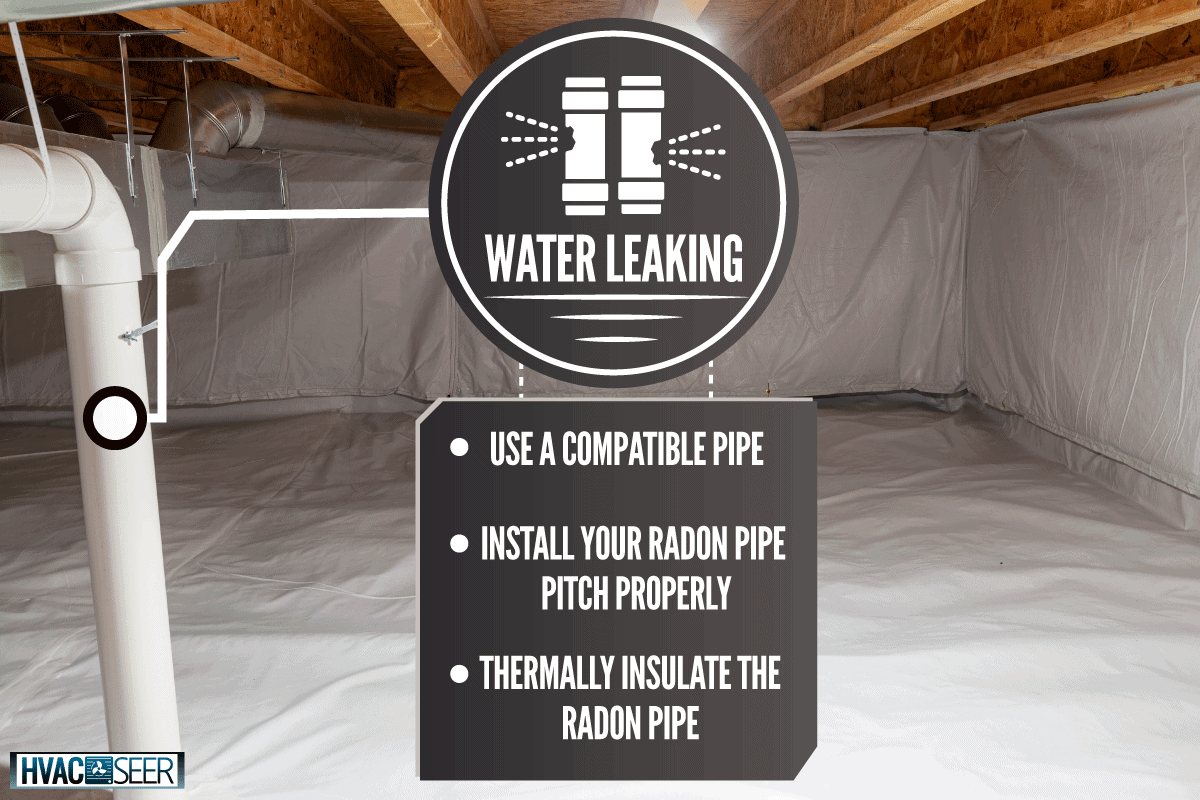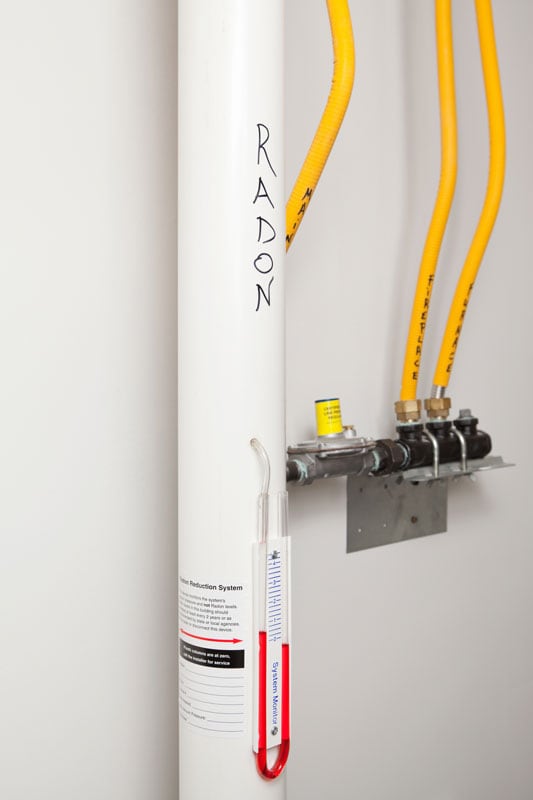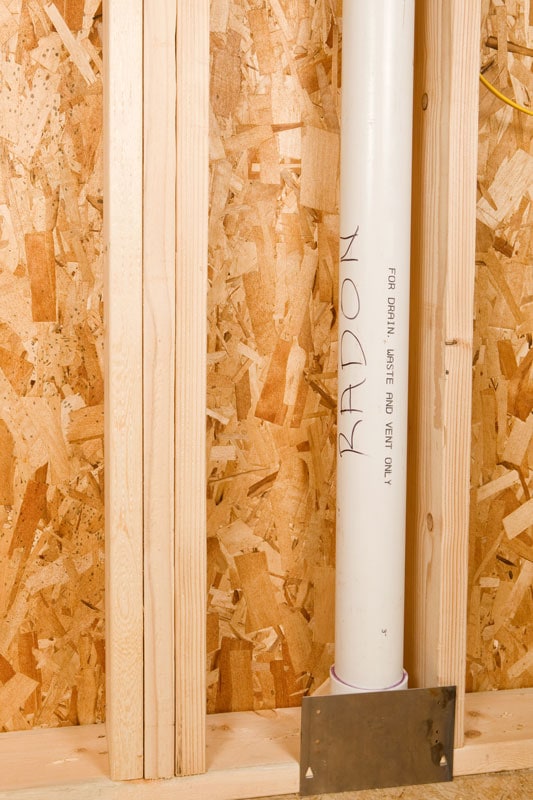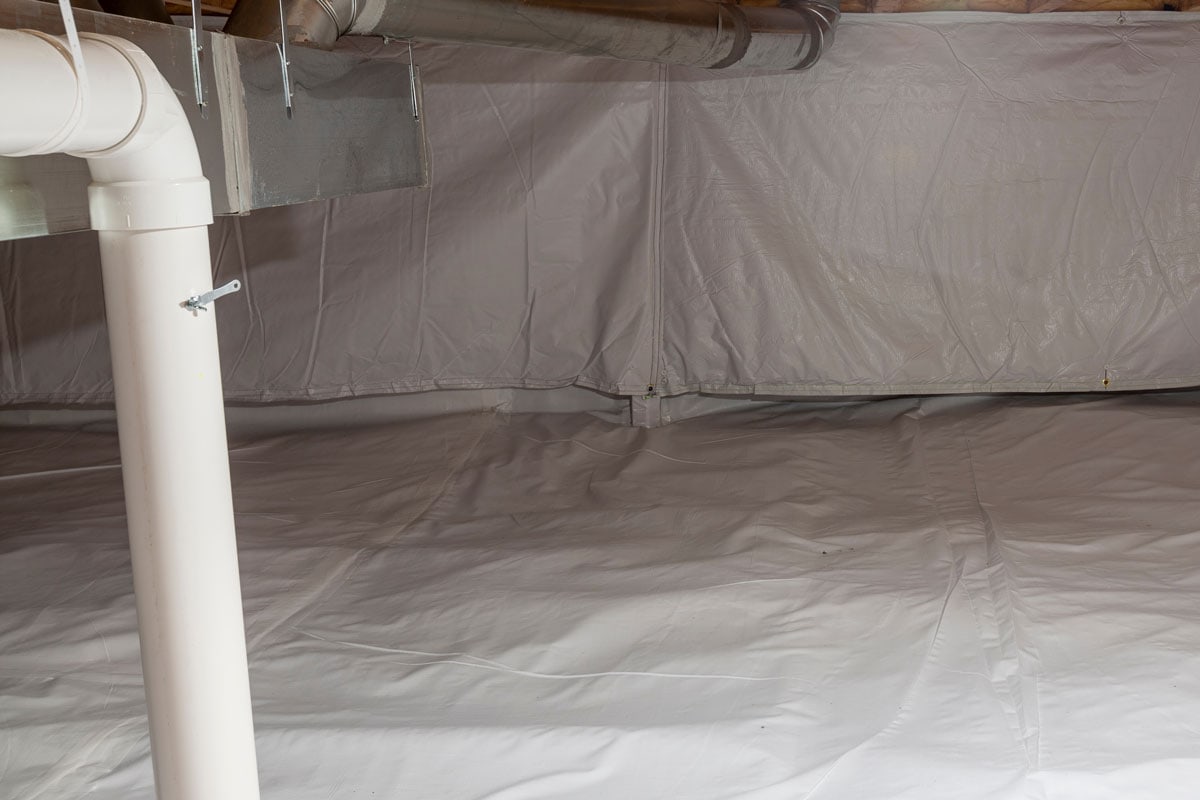Whether you're buying a new house or building a new one, maybe both can be exciting and stressful. In addition to picking a home that fits your budget and style, it should also be structurally stable and free of concerns.
Unfortunately, anything in your house will turn out to be having an issue from time to time. Like your radon pipe begins leaking water, why, and what to do? This article is for you!
Technically, the water that leaks around your radon pipe results from pipe condensation. The water can build-up due to extreme weather and using a substandard pipe in your radon system.
In contrast, water can also gather inside the system because of improper radon system installation.
Perform the following methods below to avoid your radon pipe from leaking:
- Use only a pipe that is ideal for your radon system.
- Install your radon pipe pitch properly.
- Insulate the radon pipe with thermal insulation.
Though this condensation is not harmful, immediate action is still crucial to fix this issue for good. Read on as we walk you through the proper step to stop your radon pipe from condensing. With that said, let's start discussing it below!

What Is A Radon Mitigation System?
A radon mitigation system is any method or technology vital in lowering the radon levels in structures. Its purpose is to reduce the indoor radon level as much as possible.
All systems must lower radon levels below EPA's action level of around four pCi/L (picocuries per liter). In addition, the system continually draws air from the soil using a fan before venting it outside through a pipe.
The pipe can be directed away from your windows and other openings by running outside or inside the home. Moreover, you should include properly sealing your foundation's holes and cracks.
Sealing reduces the flow of radon gas and increases the efficiency of the radon mitigation system.

3 Common Types Of Radon Mitigation Systems
Radon is an odorless, colorless, and tasteless gas produced when naturally occurring uranium in the soil undergoes nuclear decay.
There are various types of radon mitigation systems, each with its distinct benefits and drawbacks, which we've listed below:
Sub-Membrane Systems
The best places to install the sub-membrane type of systems are in houses with crawlspaces full of loose dirt from your flooring. You can cover the flooring and pipes using a plastic sheet.
Moreover, instead of relying upon the crawlspace's natural air movement, it uses a fan to keep radon gas out from your house. This system is cost-effective, but it doesn't applicable in most residential settings.
Active Suction Systems
This system needs a more active suction device to pull radon out of your crawlspace or basement. The chance of radon gas build-up underneath your basement concrete flooring is certain.
Hence, it will escape once the basement flooring begins to crack.
Passive Suction System
The passive suction system is way more efficient in keeping low radon levels from arising. In contrast, active suction reduces high radon levels more effectively than passive suction.
What Health Effects Are Associated With Radon Pipes?
According to the U.S. Environmental Protection Agency (EPA), radon is the country's second-leading cause of lung cancer, next to smoking.
Numerous homes have Radon levels that are high enough to expose residents for the rest of their lives. Thus, the risk of lung cancer progression is exceptionally high.
When inhaling radon gas, it sits in the lungs, and too much exposure to this is fatal. The EPA recorded that roughly 21,000 Americans die from lung cancer yearly due to radon.
According to EPA, most of this exposure happens within their homes, schools, and workplaces.

How Can I Test The Radon Levels In My Home?
The only reliable way to determine the radon levels in your home or workplace is to test it. Using a radon testing kit, you can detect and lower radon levels.
It should just take a few minutes to perform the testing, which is cheap and simple. Testing on a short-term basis can take a few days and for the long term expires around five years.
Furthermore, a long-term radon testing kit is more practical as this only costs you $27. It's essential to monitor its result to determine your home's safety.
How Does Water Enter A Radon Mitigation System?

There are three common reasons the water comes into your radon mitigation system. The condensation, improper pitch of pipes, and your area are in the high water table.
Condensation
Through its vent pipes, the mitigation system removes the wet air from the basement. In cold weather, moist air may condense inside the pipes, resulting in a significant water accumulation.
Improper Pitch Pipe Installation
Your radon mitigation system consists of numerous pipes that run in different directions. However, you should ensure that the pitch of these pipes is downward.
If you installed it yourself, it's possible that one of these horizontal pipes had the incorrect pitch due to improper installation. As a result, water or moisture in the pipes won't be able to drain correctly.
High Water Table Under The Basement
The water table level on your basement floor area may be the cause of the loud gurgling sound coming from your radon system.
Your system's suction pit takes the soil around its intake, making it easier to absorb radon gas from the earth.
This lower portion of the suction pit can be full of water. As a result, the air passing this water will gurgle when the radon fan is running.
How Do You Remove The Water Inside A Radon System?
Installing a sump pump is the proper way to fix the issue. The sump pit will hold all the water in your basement area, and the pump can remove it.
Check out this sump pump on Amazon.
A sump pump is also necessary when the water table rises to prevent flooding in your basement. In addition, You can also install a radon condensate bypass kit to drain the water from the radon pipes.
A bypass kit will pull out the water build-up in the pipes without reaching the radon fan. You should ensure this kit is in your radon system since water can damage that fan once it gets it.
How Do You Vent A Radon Pipe?

Sealing your radon system prevents the radon gas from releasing inside your home. Using standard PVP pipes in a plumbing draining system is a good option.
However, the ideal PVC pipe for this specific setup is a 20 and 40 schedule. Furthermore, schedule 40 is way more robust and less likely to break than 20.
See this PVC SCH40 pipe on Amazon.
Should My Radon Pipe Have A Cap?
Installing a cap in your radon pipe isn't necessary simply because it will prevent the gas from escaping out from the pipe.
Capping your radon pipe is forbidden, particularly in Illinois, in compliance with Emergency Management Agency (EMA).
How Long Can A Radon Vent Pipe Be?
Radon vent pipes must be solvent to have a solid bond link from the suction point to the termination point. Plumbing vent rules must support them.
Moreover, a minimum slope of 1/8 inch per foot is required to allow rain and moisture to drain back into the earth. Systems that follow the alternative compliance approach must be placed in structures over 50 feet tall using straight vent pipes.
How To Know If A Radon System Is Working
A radon mitigation system includes a manometer; it can precisely tell that your system is working. The u-tube has a liquid inside that is visible whether it is equally level on both sides.
See this radon detector on Amazon.
If it's at an equal level, it indicates that the radon system is not functioning.
To Finish Up

Although it may seem like an extra job, fixing your radon system should be a top priority because it can seriously impact your health and lifestyle.
If you wish for a healthier home, start complying with your local building code to ensure proper procedure. Throughout this article, we've learned a lot of significant knowledge about radon pipes creating condensation.
You also know the various types of radon systems and ways to avoid water coming inside your system.
If you find this article helpful, please view this related topic below:



